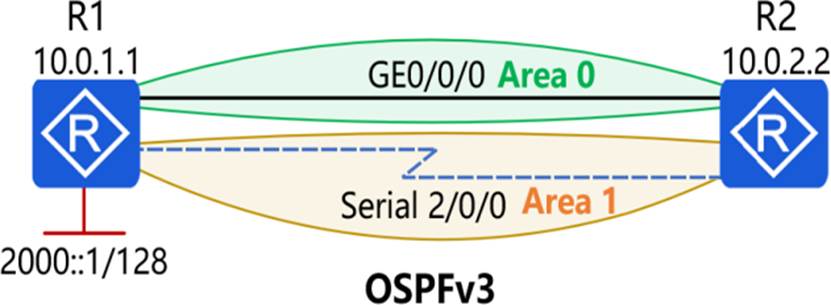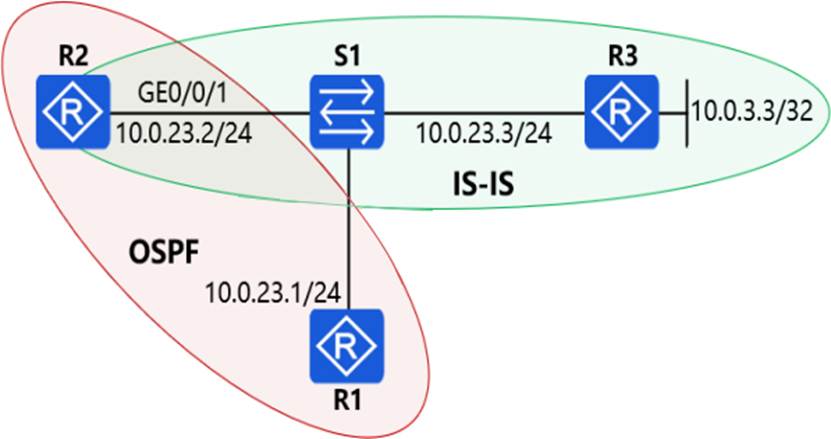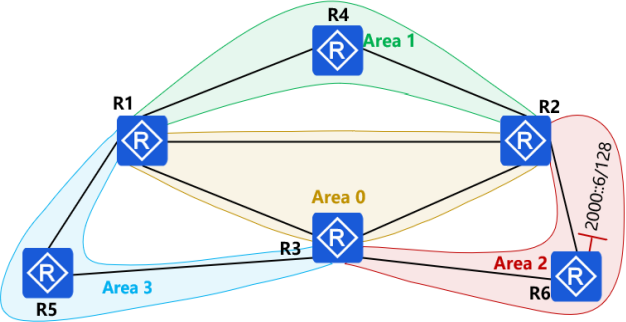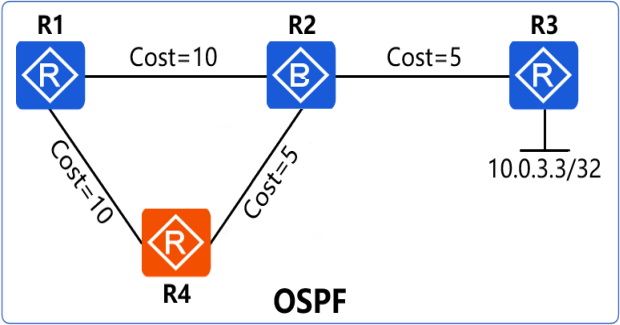Huawei H12-831_V1.0 Übungsprüfungen
Zuletzt aktualisiert am 27.04.2025- Prüfungscode: H12-831_V1.0
- Prüfungsname: HCIP-Datacom-Advanced Routing & Switching Technology V1.0
- Zertifizierungsanbieter: Huawei
- Zuletzt aktualisiert am: 27.04.2025
In the OSPFv3 network shown in the figure, area 1 is an NSSA area. R1 imports the external route 2000::1/128 into OSPFv3.

Which of the following descriptions are correct by default? (Multiple choice)
- A . R2 is responsible for converting the NSSA LSA describing 2001::1/128 generated by R1 into an AS-External-LSA
- B . There is no default route in the routing table of R1 and R2.
- C . R1 will generate an AS-Externa1-LSA describing 2001::1/128
- D . R1 will generate an NSSA LSA describing 2001::1/128
In an IPLS network, when an LSR (Label Switching Router) receives a Hello message from the other end, it will establish an LDP adjacency relationship, in which the Hello message will be sent in multicast or unicast form.
- A . True
- B . False
In the network shown in the figure, OSPF protocol is deployed between R2 and R1. IS-IS protocol is deployed between R2 and R3. In order for R1 to obtain the route to 10.0.3.3/32, IS-IS route is introduced into OSPF route on R2. Then, in R1’s routing table, the next hop address to 10.0.3.3/32 is ().

In the OSPFv3 network shown in the figure, area 1 is the Totally Stub area, area 2 is the normal area, and area 3 is the Totally NSSA area. The IPv6 address of the R6 Lopback0 interface is 2000::6/128. The Router ID of each device is 10.0.XX, where X is the device number.

When all links are normal, which of the following descriptions are correct by default? (Multiple choice)
- A . The path for R4 to send a data packet to 2000::6 may be R4-R1-R3-R6
- B . The path that R4 sends the data packet to reach 2000::6 may be R4-R2-R6
- C . The path for R4 to send a data packet to 2000::6 may be R4-R1-R5-R3-R6
- D . The path for R4 to send a data packet to 2000::6 may be R4-R1-R2-R6
A DHCP Snooping-enabled device will generate a DHCP Snooping binding table based on the DHCP request message information sent by the DHCP client, thereby implementing matching checks on subsequent messages and preventing attacks from illegal users.
- A . True
- B . False
In the network shown in the figure, the DHCP Server function is enabled on the R2 GE0/0/0 interface, and the address pool is the global address pool. The R1 GE0/0/0 and CE0/0/1 interfaces are used as DHCP clients. By default, none of the R1 interfaces can obtain an IP address.

- A . True
- B . False
In the OSPF network shown in the figure, the link cost value has been marked in the figure. R1 enables OSPF IP FRR. The main path for R1 to reach 10.0.3.3/32 is R1-R2-R3, and the backup path is R1-R4-R2-R3.

- A . True
- B . False
When an IP packet enters the MPLS domain, the ingress node checks the Tunnel ID corresponding to the destination IP address. When the Tunnel ID is one of the following, the ingress node performs IP forwarding on the packet?
- A . 0x2
- B . 0x0
- C . 0x1
- D . 0x3
When an OSPF network fails, the following processes are required to switch traffic paths. Please sort the following processes according to the steps for fault recovery:

Which of the following commands must the administrator configure when enabling the MPLS LDP function on the GE0/0/1 interface of the device? (Multiple choice)
- A . [Huawei] mpls ldp
- B . [Huawei-GigabitEthernet0/0/1] mpls
- C . [Huawei-GigabitEthernet0/0/1] mpls 1dp
- D . [Huawei] mpls

